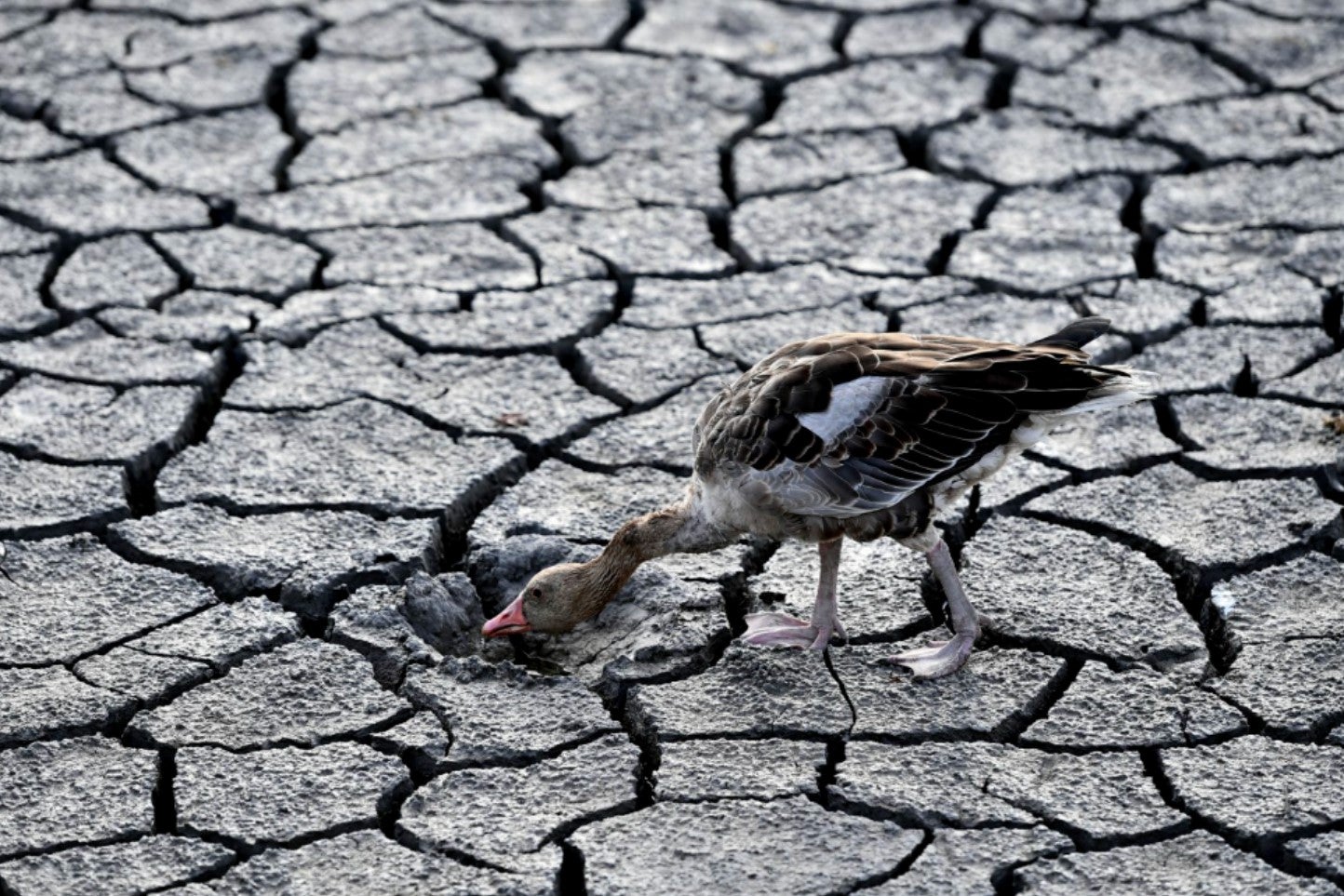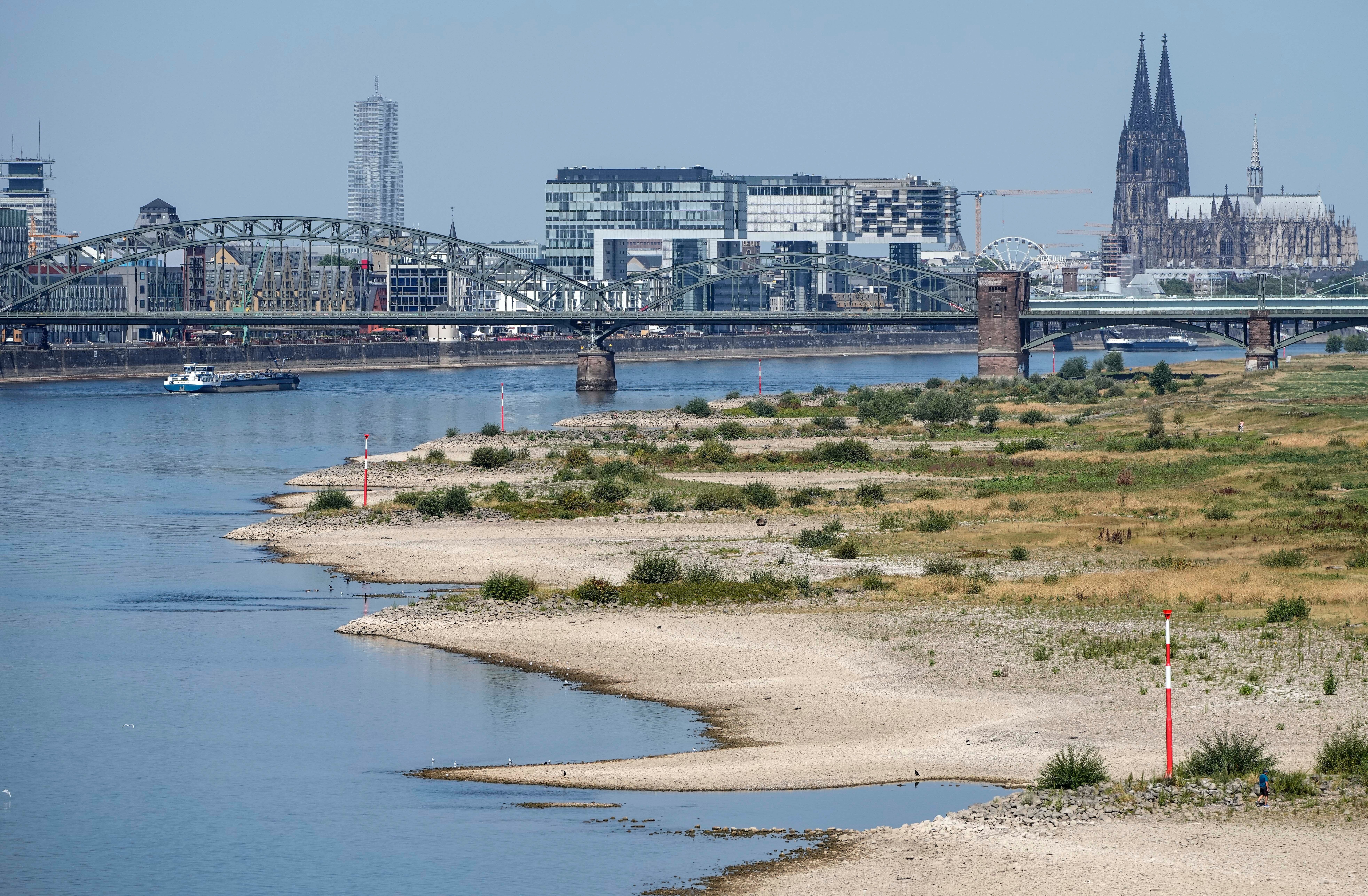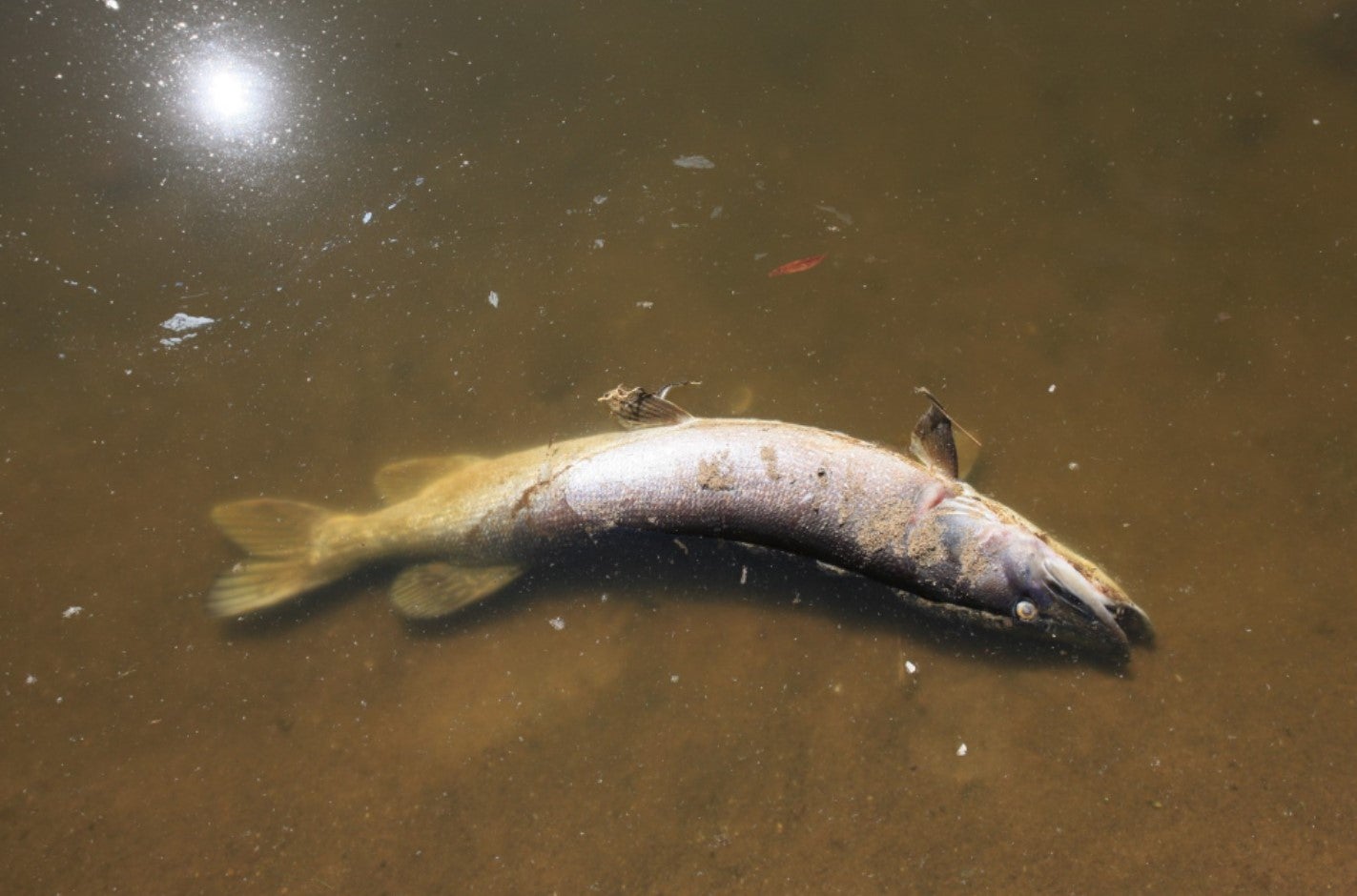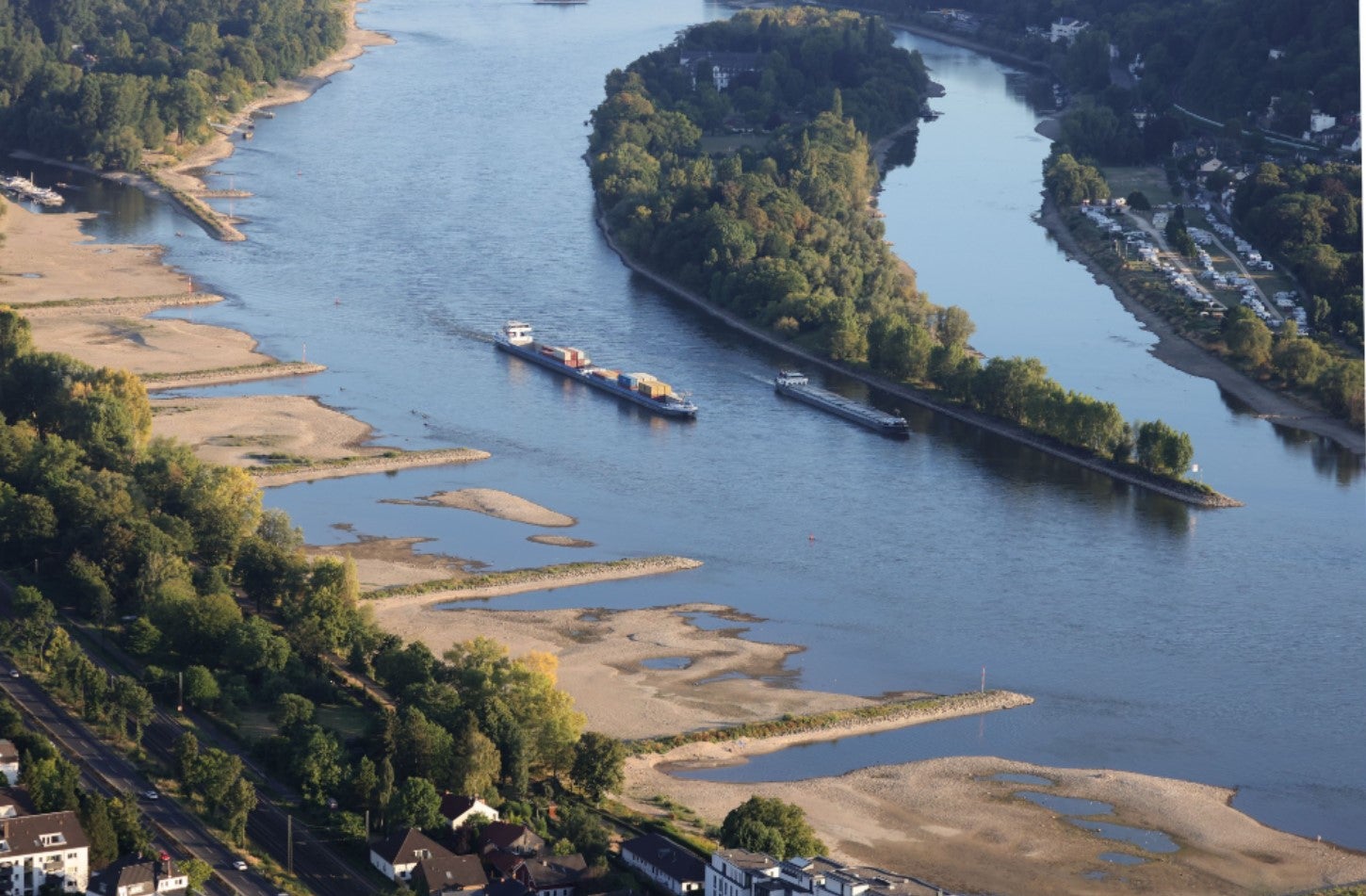River Rhine close to running dry as 50% of Europe under drought warning
Water levels on the Rhine River could reach a critically low point in the coming days
Dramatic new images show dangerously low water levels in many of Europe’s rivers as more than half of the continent is at risk of drought due to the ongoing heatwave.
Weeks of dry weather have turned several of Europe’s major waterways into trickles and a European Commission analysis of the prolonged drought shows that a staggering portion of Europe is ‘exposed’ to a drought warning - 44 per cent of EU and the UK. Meanwhile, 9 per cent of EU and the UK, face a more serious drought ‘alert’.
Soil water content has reduced significantly, making it harder for plants to extract water from the soil leading to widespread stress on vegetation — namely in the Italian lowlands, in southern, central and western France, in central Germany and eastern Hungary, Portugal and in northern Spain.
The yield outlook for EU summer crops has been substantially reduced due to continued hot and dry weather conditions in much of Europe.
The situation is also posing a headache for German factories and power plants that rely on deliveries by ship and making an economic slowdown ever more likely.
Water levels on the Rhine River could reach a critically low point in the coming days, German officials announced, making it increasingly difficult to transport goods — including coal and gasoline — as drought and an energy crisis grip Europe.



Transporting goods by inland waterways is more important in Germany than in many other Western European countries, according to Capital Economics.
"This is particularly the case for the Rhine, whose nautical bottleneck at Kaub has very low water levels but which remains navigable for ships with small drafts," said Tim Alexandrin, a spokesman for Germany’s Transport Ministry.
Water and heat stress is driving crop yields down from an already negative outlook for cereals and other crops. France, Romania, Spain, Portugal and Italy will need to deal with this reduced crop yield. Germany, Poland, Hungary, Slovenia and Croatia are also impacted.



In Italy, the Po River basin is facing the highest level of drought severity. A Drought emergency has been declared in five Italian regions and insufficient water availability has led to multiple use restrictions across municipalities. Similar measures to restrict water use have been taken in France.
The situation is also difficult across the Iberian Peninsula. In Spain, volumes of water stored in reservoirs are currently 31 per cent lower than the 10-year average. In Portugal, hydroelectric energy stored in water reservoirs is at half the average of the previous seven years. Both countries are experiencing conditions that increase the chances of wildfires.




Join our commenting forum
Join thought-provoking conversations, follow other Independent readers and see their replies
Comments